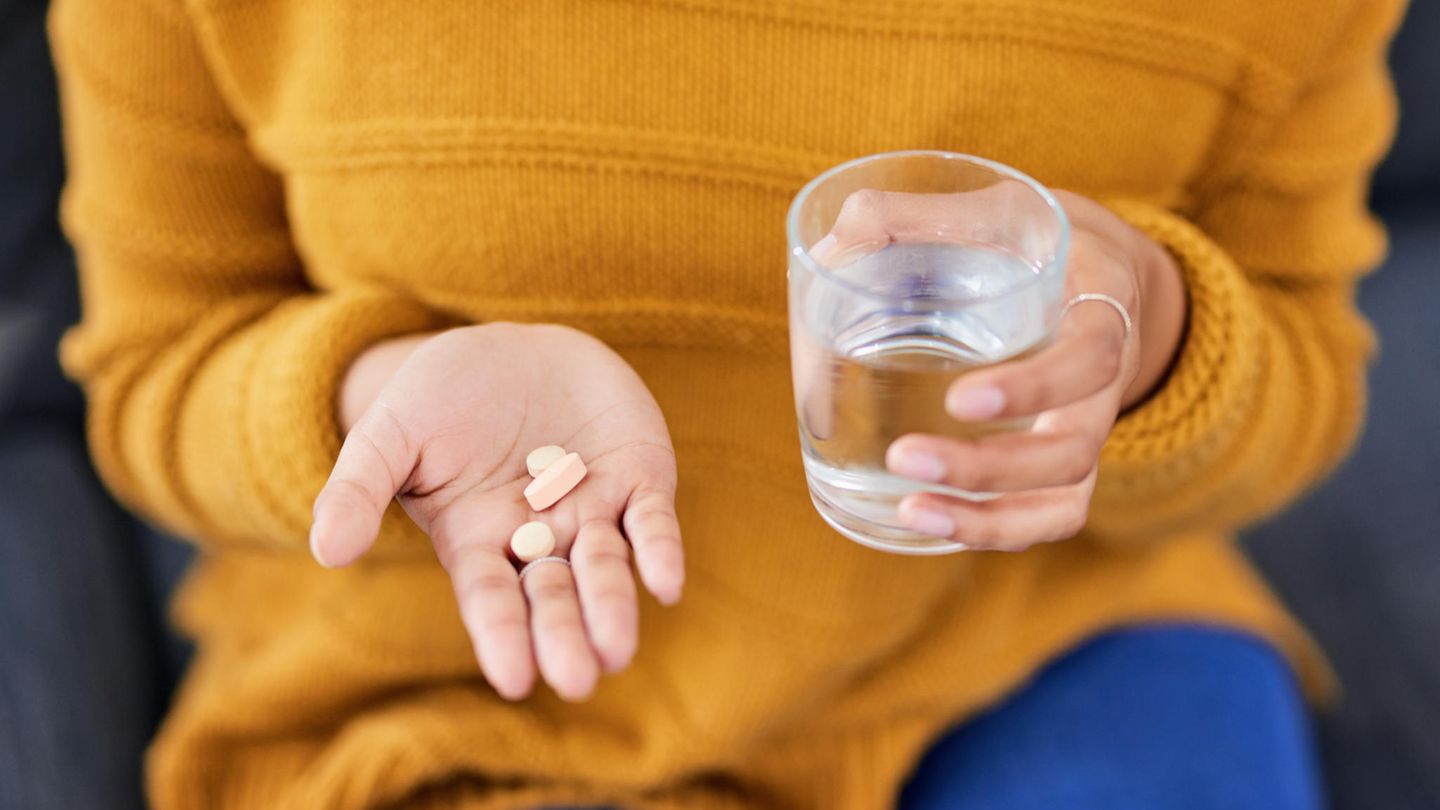Swollen tonsils or cystitis: antibiotics fight bacterial infections. In order for them to work optimally, there are a few things to consider. Avoid these mistakes.
Antibiotics are a blessing – on the one hand. Since the discovery of the active ingredient penicillin in 1928, diseases that were previously often fatal have been curable, including pneumonia and serious bacterial infections. Today there is a multitude of substances that work in different ways. Some agents kill bacteria, others inhibit their growth. In this way, they help the body’s immune system to get rid of the pathogen.
On the other hand, they have numerous side effects: The remedies cannot differentiate between good and disease-causing bacteria, which means that they also attack the beneficial bacteria in the intestine. Diarrhea, gastrointestinal complaints and nausea are some of the most common side effects during antibiotic therapy. Some people also develop an allergic reaction, others develop fungal infections of the mucous membranes. The Federal Center for Health Education () therefore advises the use of antibiotics “as often as necessary and as rarely as possible”. This should also prevent the pathogens from becoming resistant to the substances.
In order to achieve a good effect, antibiotics must always be taken as directed. The right dose and regular intervals between ingestions are important – they keep the level of active substances in the blood constant.
Patients should also watch out for these possible errors during therapy:
Mistake 1: taking antibiotics with milk
A few active ingredients are incompatible with milk and dairy products. These include antibiotics from the group of tetracyclines and gyrase inhibitors, such as doxycycline, ciprofloxacin and norfloxacin. They cling to the calcium in the milk and in this way form tiny balls that the body cannot use. The drug travels unmolested through the stomach and intestines and remains ineffective.
Doctors and pharmacists can provide information on whether the respective drug is one of them. However, there is no blanket ban for the duration of antibiotic therapy. However, there should be an interval of at least two hours between taking the medication and consuming milk, cheese and quark.
Mistake 2: taking antibiotics without consulting your doctor
An antibiotic must be taken strictly according to the instructions. The attending physician adjusts the active ingredient and the duration of use to the underlying infection. Anyone who simply swallows an antibiotic on suspicion and without medical advice acts negligently and risks side effects. In the worst case, bacteria develop resistance to the antibiotic due to incorrect intake. It then loses its effectiveness.
Mistake 3: Do not use additional contraception
Women who use contraceptive pills and are taking an antibiotic at the same time are advised to be more careful: the drug may reduce the effectiveness of the pill. Antibiotics from the group of penicillins, tetracyclines, cephalosporins and chloramphenicol are particularly affected. In order to prevent an unwanted pregnancy, it makes sense to use condoms until your next menstrual period.
Mistake 4: playing sports
People who take antibiotics are usually also strictly banned from exercising by the attending physician. The reason for this is not the medication, but the disease that the body is fighting against. If you do sports despite feeling sick, fever and sore throat, you risk the infection spreading. In the worst case, there is a risk of myocarditis, an inflammation of the heart muscle.
Even after the therapy has been completed, it makes sense to take a few days off. In addition to pathogens, antibiotics fight the natural bacterial flora of the intestine, which supports the immune system. The body is therefore more vulnerable and exercise is an additional burden.
Mistake 5: Always relying on the antibiotic to work
Antibiotics only work against bacterial infections. Many illnesses such as rhinitis and are triggered by. The same goes for Covid-19. In these cases an antibiotic is ineffective.
Sometimes it happens, however, that the body is severely weakened by a viral infection. Bacteria then have an easy job, penetrate the body and multiply. A viral infection of the respiratory tract can lead to bacterial pneumonia. Against these so-called, the use of an antibiotic makes sense.
Over time, some bacteria have developed resistance to antibiotics. The best known is the methicillin-resistant pathogen Staphylococcus aureus (). For example, this pathogen can no longer be treated with the active ingredient penicillin.
If an antibiotic is only prescribed based on symptoms, it may not work. A smear, for example from the tonsils, reveals which pathogens are present. The doctor can then adjust the antibiotic accordingly. According to the Institute for Quality and Efficiency in Health Care (), such a smear is rarely taken in practice, as the result is only available after two or three days. Sick people should ask their doctor whether a smear test before starting antibiotic therapy can be useful.
Mistake 6: antibiotics and alcohol – not a good idea

When taking antibiotics and alcohol at the same time, the so-called antabuse effect can occur. Sufferers develop headaches, cardiac arrhythmias and nausea and even vomiting. The reason: Certain antibiotics such as metronidazole and cefotetan inhibit an enzyme that is important for the breakdown of alcohol. As a result, the toxic breakdown product acetaldehyde accumulates in the body. The reaction can occur even with small amounts of alcohol.
Doctors generally advise against alcohol during antibiotic therapy – regardless of which active ingredient is ingested. The reason: alcohol is a strain on the body and organs in addition to antibiotics and infection, which can hinder recovery.




